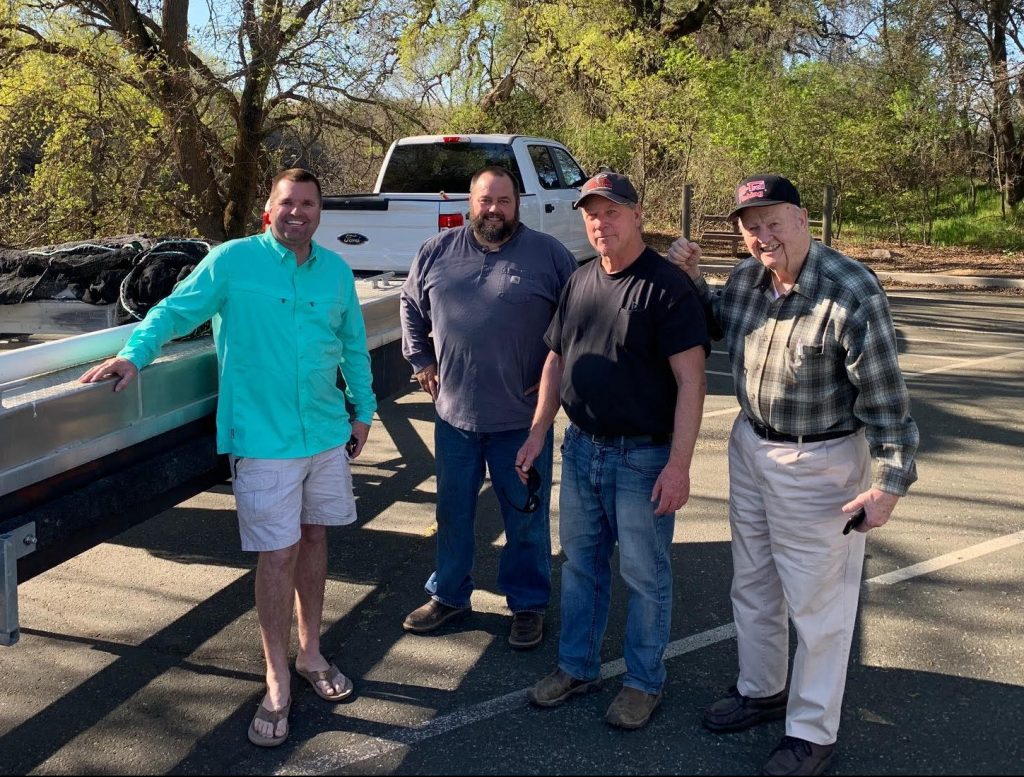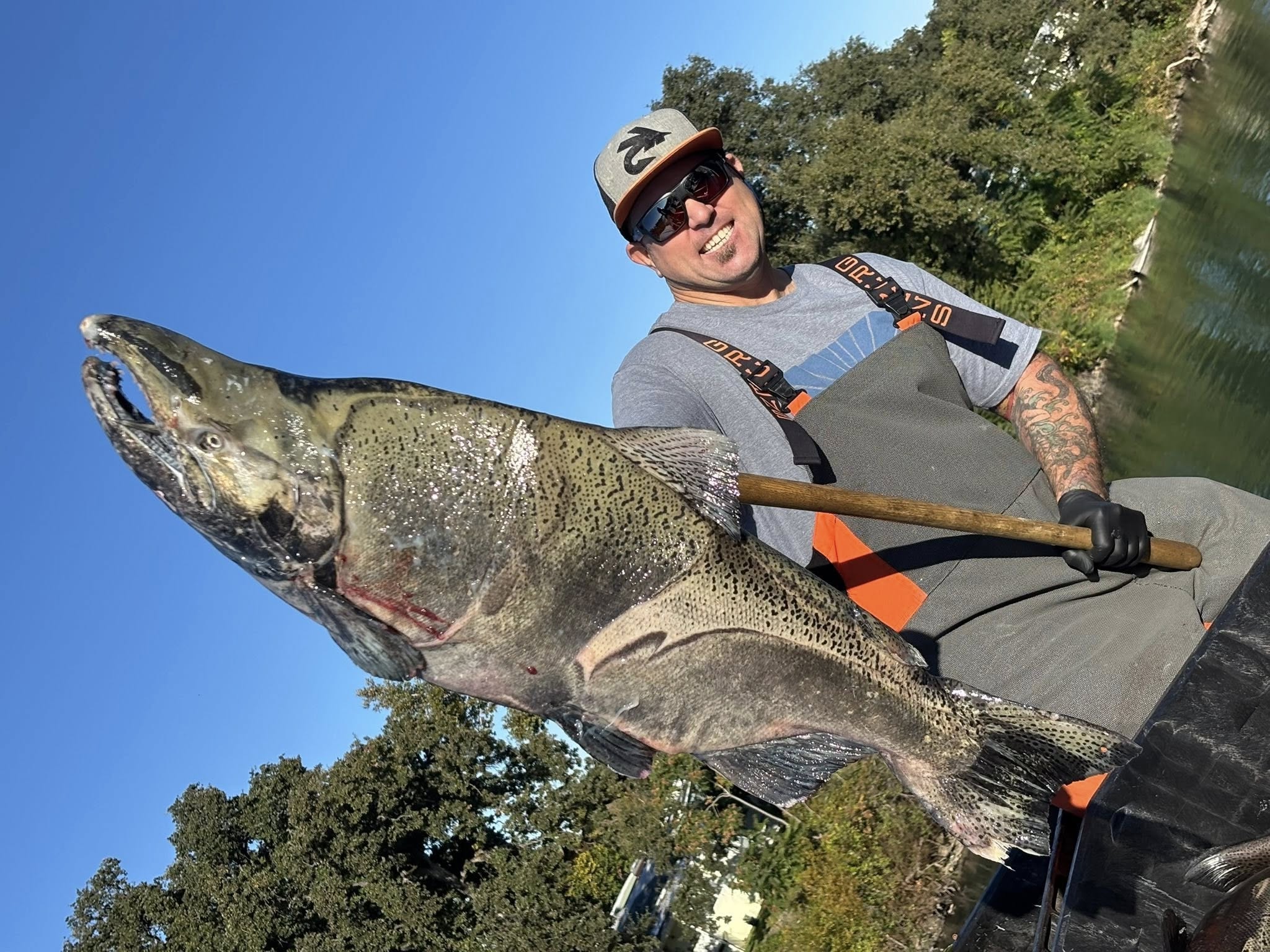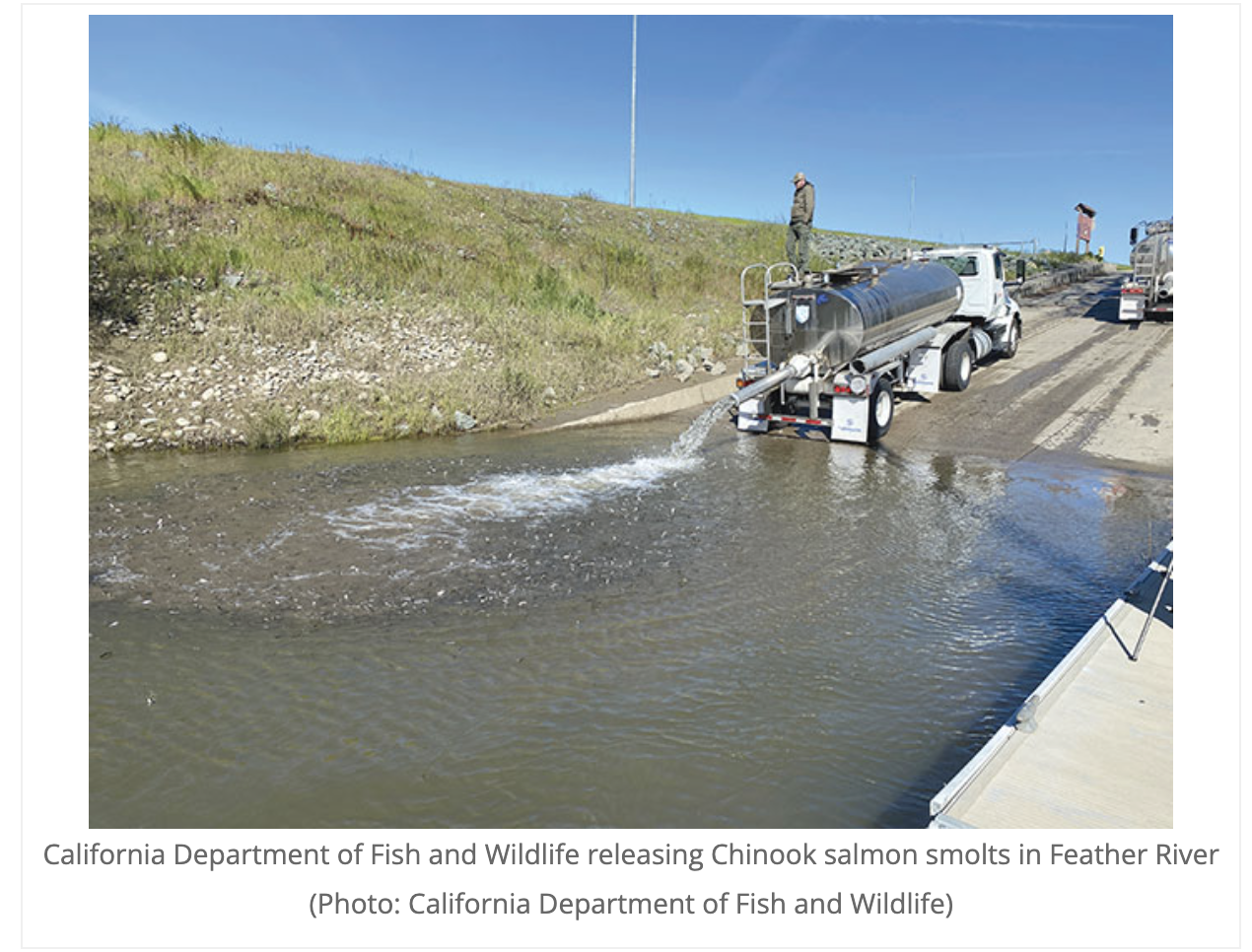Acoustic Smolt Tagging Project for Fall-Run Salmon and Butte City Release Point
Western Outdoor News
Sacramento River 4/2/2021

Collaboration between government agencies and fishing organizations create opportunity for increased river salmon runs
By DAVE HURLEY
Western Outdoor News Staff Writer
In an effort to turn the tide of vastly decreased river salmon runs, the Nor-Cal Guides and Sportsmen’s Association (NCGASA) has collaborated with the Golden State Salmon Association (GSSA) along with government agencies to increase future river salmon runs by means of a three-year experiment.
James Stone, president of the NCGASA, was on scene at the Butte Creek launch ramp on Friday afternoon to observe the release of 186,000 salmon smolts in the 3 to 4-inch range. He was accompanied by several members of the Golden State Salmon Association including President John McManus and Secretary and Executive Committee member, Dick Pool. He said, “We had originally planned to release the smolts 29 miles upriver at Scotty’s Landing near Chico at mile marker 195, but the water was only 2 feet deep, and we were unable to utilize our net pens with the flows at merely 4100 cfs. As a result, we pivoted to move the release downstream to mile marker 169 which is just above the Butte City Bridge. This release was our variable group of smolts since a control group of 187,000 smolts was released at Battle Creek near the Coleman Hatchery on Wednesday. 25 percent of both groups of smolts are outfitted with wire-code tags, and an equal number of smolts in each group are outfitted with a $300 acoustical tag provided by the Bureau of Reclamation.”

The project was the brainchild of Pool who said, “I proposed this project eight years ago, and although it took five years to make it happen, we are trying to test the survival rate of Coleman Hatchery smolts if they are released further downstream. A survey by the Santa Cruz Science Center in 2007 demonstrated that only 37 percent of the smolts made it from Coleman to the Butte City Bridge and during low water years such as 2007-09, the loss of smolts was 70 percent in the first 100 miles of the release. When the river is running high and fast, the predators don’t have much of a shot, and the smolt survival rate is much higher. It is extremely important to release the smolts in the upper river as we have discovered that smolts released in San Pablo Bay and beyond don’t track back to the streams of origin, becoming lost in various waterways in their attempt to spawn. Thanks to the cooperation of several agencies including the US Fish and Wildlife Department and the Bureau of Reclamation, we were able to set up this project. It occurred first during a high-water year in 2019, and many of the smolts were washed out. The 2020 project was postponed due to COVID, and this is the first year we have completed the releases during a low water year.”

Stone added, “The goal is to have both the control group and the variable group released on Friday meet close to each other and travel towards the Golden Gate and into the ocean. As each group has members rigged with the acoustical tags, we can monitor their arrival at various locations along the journey including the Butte City Bridge, Tower Bridge in Sacramento, and finally, the Benicia Bridge in Suisun Bay. These are fall-run salmon, and they will be returning to the river in 2023, allowing for a three-year study to determine what is occurring with our river salmon. The health of the upper river is in obvious jeopardy, and this study will help provide answers as to why this is occurring, whether it is a matter of not enough nutrients available for the smolts or other factors. In 1996/97, salmon were released as fry which amounted to 200 to 300 percent more salmon, but the survival rate was extremely low as the smolts were sucked up into pumps along the gauntlet. Our release was planned for the evening resulting in far less predation from birds who key on the releases. Another aspect of Butte City was the deep water access adjacent to the launch ramp.”
According to Stone, the approximately 400,000 smolts were enhancement fish and not included in the normal mitigation releases as the goal of the Coleman Hatchery is to raise plus or minus 15 percent of 12 million smolts annually for the general hatchery management plan.
The ‘conveyor belt’ of the primary river for California’s salmon population is currently ‘broken’ as evidenced by the poor returns over the past several years, and collaborations such as this are essential to keep salmon a viable species within our state. Fortunately, due to the efforts of dedicated individuals within organizations desperately attempting to save California’s salmon from extinction, a collaboration with government agencies is in process.








